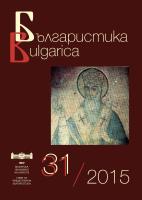
Научни форуми. 2015 г.
Data about scientific events in the field of the humanities in Bulgaria in 2015
More...We kindly inform you that, as long as the subject affiliation of our 300.000+ articles is in progress, you might get unsufficient or no results on your third level or second level search. In this case, please broaden your search criteria.

Data about scientific events in the field of the humanities in Bulgaria in 2015
More...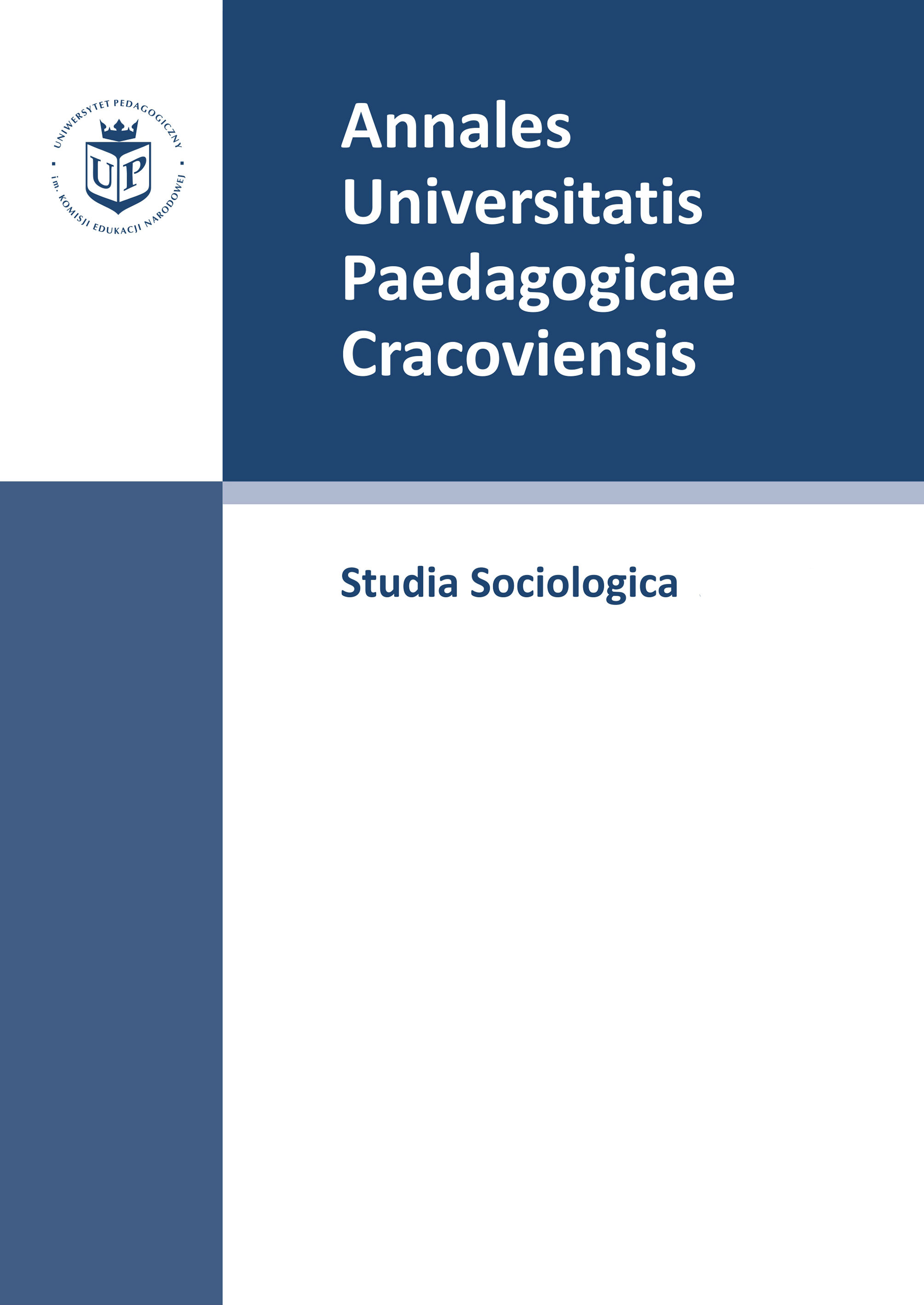
The author of the article, on the basis of works of Russian glottodidactic specialists and cultural scientists, discusses the main aspects of preparing Russian philology students for adequate participating in intercultural communication. She points out the necessity of forming not only the mechanisms of communicative act but also the so-called intercultural communicative competence. This competence assumes the knowledge of cultural facts and norms regulating communication in a given language. Introducing cultural knowledge into foreign language teaching makes it possible to accomplish educational aims and forming students’ personality. In the final part of the article, the author presents her experience in forming the intercultural science competence in the sphere of language etiquette in students of the Pedagogical University in Cracow.
More...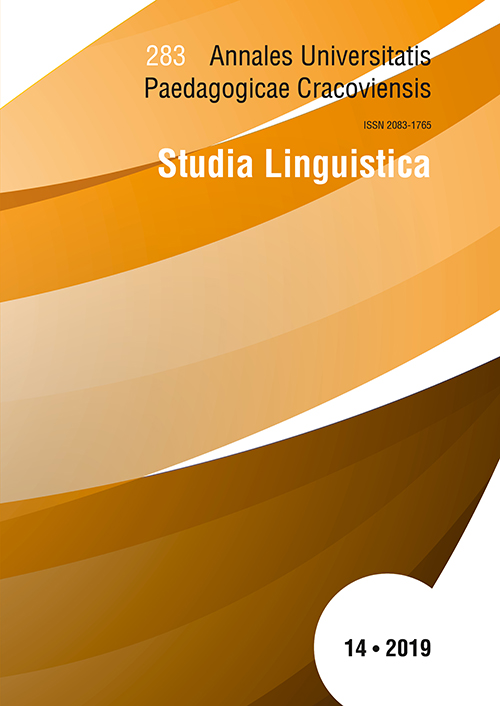
The material basis of the paper are the names of Polish female associations from the 30s of the 20th century. The analysis involves components used to expose feminine qualities – general names (kobieta, pani, niewiasta – ‘woman, lady’), as well as detailed ones, which were categorised according to the information they contain. These are the elements of the world, which in addition to gender, constitute a basis for communality of the members: social and professional status, educational background, participation in military activities, social activity sphere, or common interests. The material presented in the paper shows that in the Second Polish Republic the need for exposing femininity and emphasising communality was very strong in the names of associations.
More...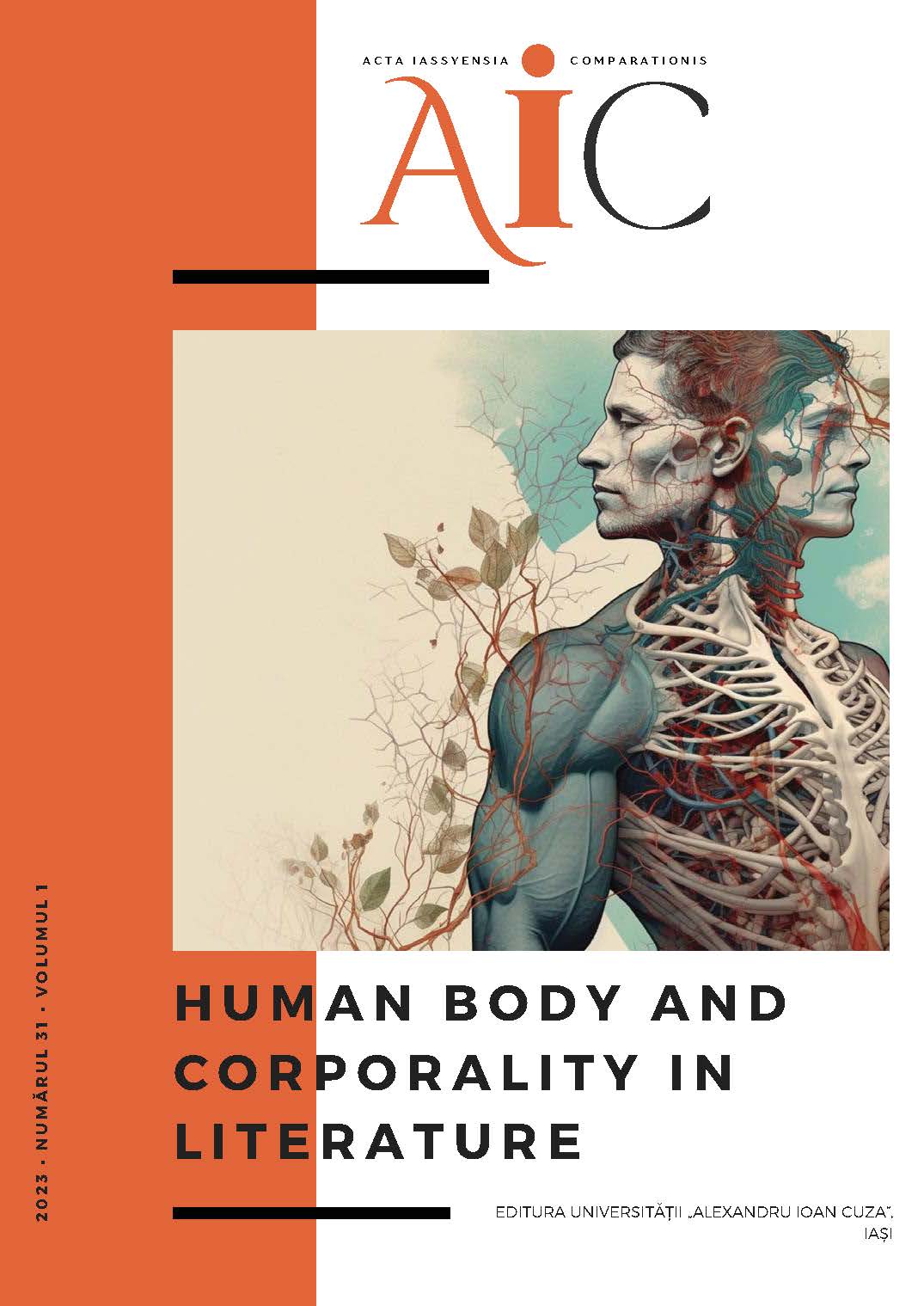
The author of Don Quixote grants a primary role to women and, throughout his works, creates magnificent portraits of women. Plato’s ideas dominated thought for several centuries, and Cervantes was influenced by the Athenian philosopher. The illustrious Spanish writer considers beauty and virtue consubstantial, a beautiful person is also virtuous, there is no beauty without virtue. To describe women physically, Cervantes uses the canons inspired by the harmony of the bodies of the Greco-Roman statues, later propagated by Renaissance poetry and converted into clichés. The women have long golden hair, coral lips, rosy cheeks, pearl teeth, necks of alabaster, hands so white that they look like snow, and great harmony of body. A body that Cervantes never explicitly describes. Surprisingly, Mr. Vidriera ironises precisely these canons of beauty, too hackneyed at the time. In Cervantes’ works, ugliness is associated with a lack of virtue.
More...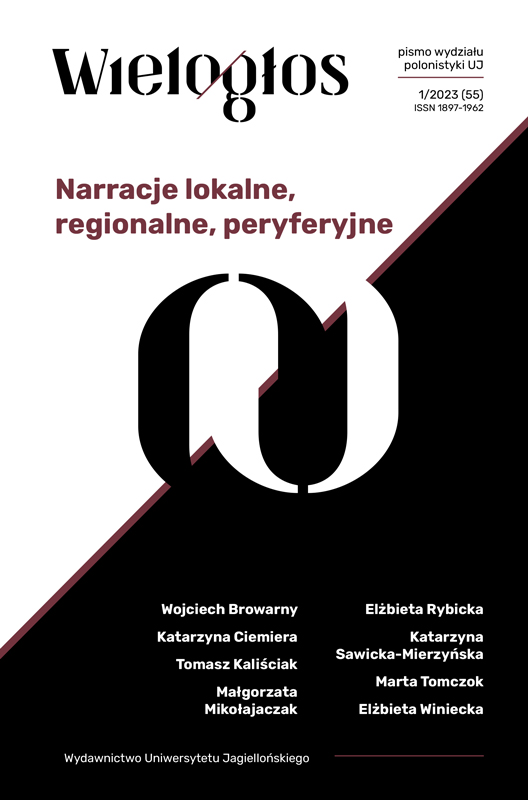
The article focuses on the relationship between gothicism and regionalism in the literature of Lower Silesia. The author poses a question about the role of the imaginarium of horror in shaping the psychotopography of the region, in which real, spectral and affective topographies converge. An important context is the peripheralization of the region after the political transformation, which resulted in economic regression of Lower Silesia. Gothic regionalism is therefore interpreted as a reaction to social, economic and political processes taking place on a local and global scale, but perceived from a peripheral point of view. As a descriptive term, however, it allows to recognize several aspects: the key role of center-periphery relations, local-global interactions, the influence of late capitalism, the return of repressed events as the uncanny, the horror of everyday life and the exclusion of what exceeds the internal normativity of regional communities. Works of selected authors were analysed, e.g. Joanna Bator, Olga Tokarczuk, Henryk Waniek, Jakub Bielawski, Maciej Bobula.
More...
The article consists of two parts. The first contains a summary and an interpretation of the project “New regionalism in literary studies,” initiated in 2012 by Małgorzata Mikołajczak and Elżbieta Rybicka, joined by researchers from, among others, Białystok, Olsztyn, Katowice and Wrocław. The author looks at both external reception, analyzing reviews of the publications that are the aftermath of the New Regionalist conferences, and internal one, i.e. self-diagnoses formulated by its participants. One of the conclusions is the postulate to strengthen interregional comparative studies, which can be helped by the use of tools developed in the field of translation studies, especially in its cultural variety. The second part is devoted to the Belarusian writer from Podlasie, Sokrat Janowicz, who treated translation as a way to overcome the particular determinants of his own work and Belarusian culture.
More...
The article proposes the use of a new concept of coal city, which allows describing regions of hard coal mining and post-mining regions by taking into account both their geology as well as their mining and economic culture. Węglopolis (Coal City) is a perspective on literature and art, particularly useful in attempts to assess the past of coal regions and design their future. The author shows the correlation of coalpolises both with the available naming tradition (Górnośląsko-Zagłębiowska Metropolia, polis, megalopolis), as well as with research on the Carbocene, a specified variant of the Anthropocene, in which the role of hard coal in creating and destroying societies, the natural environment and culture is taken into account.
More...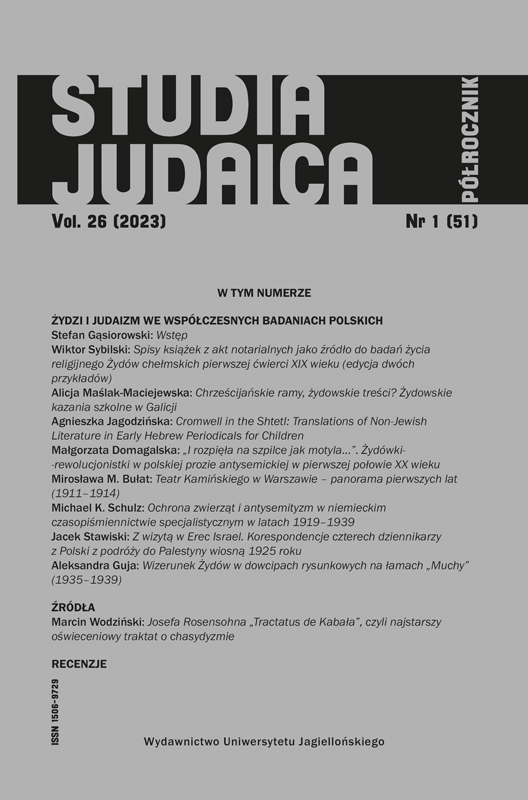
After the revolution of 1905, revolutionary Jewish women began to appear among the heroines typical of the antisemitic novels of the nineteenth century. This type of female protagonist can be found in the novels written by Józef Weyssenhoff (Hetmani [The Hetmans]), Rev. Jan Gnatowski (Zły czar [Bad Spell]), and then in the 1930s in the novels by Roman Dmowski (Dziedzictwo [The Heritage]) and Jędrzej Giertych (Zamach [The Coup]). In these narratives, Poland is presented as a victim of manipulation by Jews, Germans, and in the case of the Bad Spell by Jewish Bolsheviks. In these stories, female Jewish revolutionaries implement their secret policies using their strong erotic influence to seduce Polish activists. Demonism and evil, as well as the misogynistic attitude of the fin de siècle era were employed to create their portraits. In these female protagonists, one can detect echoes of features associated with such Jewish heroines as Salome, Judith, and Herodias whose portraits were typical of the art and literature of the epoch.
More...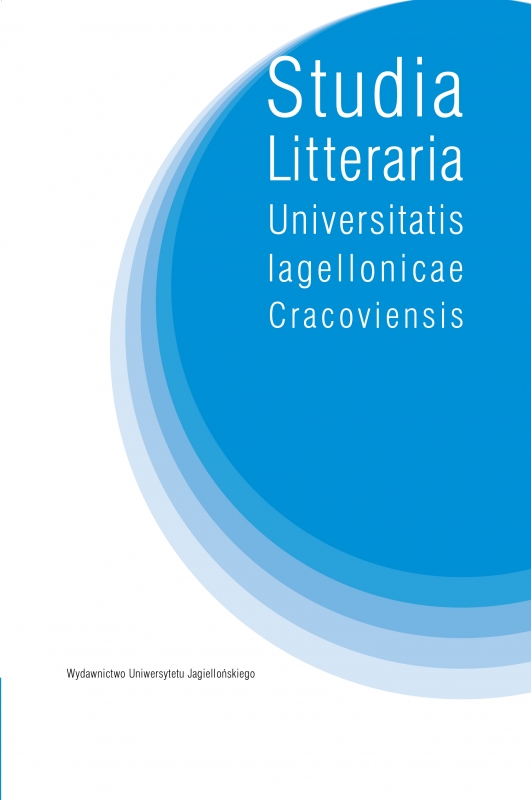
The paper presents an analysis of the construction of military masculinity in Carl Snoilsky’s Svenska bilder (Swedish Pictures). The construction of military masculinity is discussed as an important element of the cultural memory formulated in this Swedish canonical cycle of historical poetry. Taking Jan and Aleida Assman’s theory of cultural memory as a theoretical starting point, the article juxtaposes it with literary studies of masculinity to reflect on the meaning of military masculinity. War poetry and military poetry is identified as the dominant type of the poetic form of the cycle, and gendered patterns of cultural memory are discussed as reproducing the patriarchal principles of the nineteenth-century historiography. The dominant model of masculinity in Svenska bilder is presented as marked by militaristic values combined with the ethos of bourgeois masculinity. As the cycle assigns different military roles to the different stages of a man’s life, the dynamics of the meanings of masculinity is shown through the category of age. Chivalrous boyhood is presented as a stage preceding youth subordinated to the norm of homosocial military socialisation. The image of the adult man fighting at war is discussed as an amalgam of heroising and deheroising strategies. The presence of war veterans and the concept of the citizen-soldier in Svenska bilder is seen in the article as the confirmation of the hegemonic military model in the cycle.
More...
The article investigates the reception of Carl Snoilsky’s Svenska bilder (Swedish Pictures) in Swedish schools, from the 1890s until today, in the light of the concept of cultural memory. For more than half a century, Snoilsky’s cycle of poems, depicting important events and figures in Sweden’s early modern history, belonged to the literary school canon; three special school editions were published in 1894, 1931, and 1939 respectively, and frequently reprinted. In the 1960s, however, due to radical educational reforms, and the ensuing abandoning the idea of patriotic upbringing, the collection of historical poems lost its strong standing as a set reading, and it has since been more or less absent from the teaching of literature at school. It is concluded that the reception of Svenska bilder in the educational context reflects in several respects pronounced changes of Swedish cultural memory during the 20th century.
More...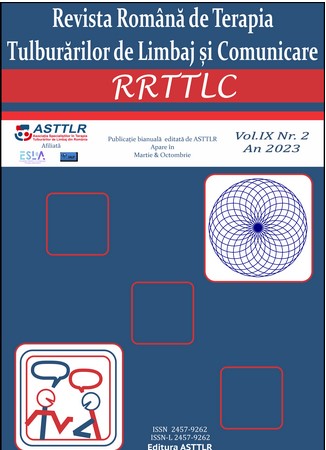
Autism spectrum disorders (AST) are a complex and puzzling cluster of disorders in which social isolation, communication difficulties, and the presence of peculiar and/or repetitive behaviors, in various degrees, are the main characteristics. These characteristics are interlinked and share similar brain and cognitive functioning specificity. This paper focuses on communication and language disorders, their particularities in persons with AST, and their impact on differential diagnostic and specific interventions. Efficient therapeutic strategies and techniques for persons with ASD should address these strong correlations and overlaps between the specific social behavior development and the particularities of using language and communication in an ecological paradigm.
More...
This paper aims to identify the developmental characteristics of language in preschool children, capturing the impact of the speech therapy program on language development, and utilizing the principles of the TALK program in speech therapy intervention. The study sample consisted of 22 preschoolers, aged between 5-6 years, from a kindergarten in Cluj-Napoca. After dividing the participants into two groups, control and experimental, the evaluation was performed using three assessment tools: the Curriculum TALK, Portage (Language subscale), and the Logopedic Album. A speech therapy intervention program was implemented for the experimental group, followed by a final evaluation conducted using the same assessment tools. After collecting the results from pre and post-tests, all data were centralized in an SPSS database for processing. Thus, by using the paired samples t-test (hypothesis 1), the independent samples t-test (hypothesis 2), and Pearson's bivariate correlation (hypothesis 3), it was found that all research hypotheses were confirmed.
More...
This paper analyzes, on the one hand, voice disorders occurring in radio journalists and what are the leading causes and solutions, on the other hand. The paper contains both qualitative research methods and instruments, such as case study and interviews with all the actors involved in this process: vocal professionals-radio journalists, vocal specialists-physicians, speech therapists, and speech pathologists. Based on these methods and tools, it was possible to conclude whether the lack of vocal hygiene application is related to voice disorders. Also, we shaped the causes and factors that lead to voice disorders and what are the directions for prevention and intervention in this medical issue.
More...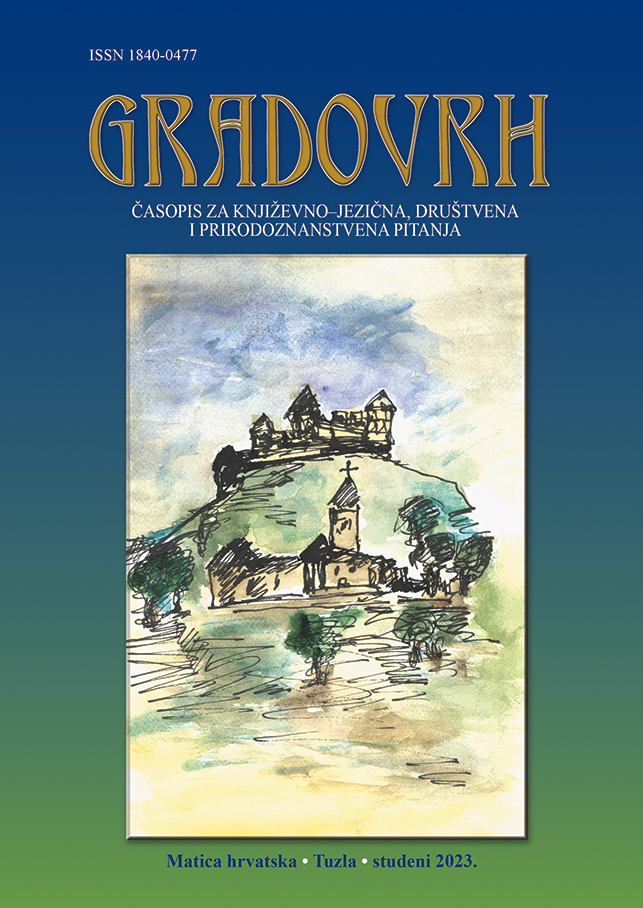
This year, contemporary Bosnian language science lost Professor Senahid Halilović, one of the most important native language researchers in this area from the end of the last century and the beginning of this century, a scientist who made an immeasurable contribution in the war and postwar years in connection with the establishment and standardization of the Bosnian language. Bosnian studies is only now faced with the task of describing and evaluating everything that Professor Halilović did and contributed linguistically for Bosnia and Herzegovina. The aim of this work is to highlight the importance and analyze the linguistic and methodical works of Professor Senahid Halilović, without which the teaching of the mother tongue and literature in primary and secondary schools, as well as in higher education institutions, would not be able to function today. This, first of all, refers to the Orthography of the Bosnian language from 1996 and the spelling manuals that were published immediately after that. Although he was not actually a teaching methodologist by vocation, these works were done in accordance with all contemporary methodical principles and it can be said that these works belong to the corpus of methodical Bosnian studies.
More...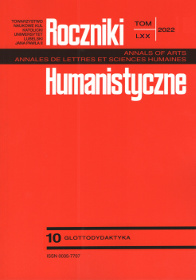
This article presents selected issues from the history of Kashubian language orthography to justify the fact that the notation should serve the reader. Ceynowa, the creator of the literary Kashubian language, noticed that written Kashubian eliminates dialect differences and is the best transmitter of knowledge about Kashubia among the Kashubians themselves and in the world. He modelled the alphabet on the Polish one, because it was the closest Slavic language to Kashubians, since they knew it from prayer books. Even today, the identity aspect of a Kashubian-language text stands out, precisely because it is written in Kashubian.The reading of Kashubian needs to be learnt, not only at school, by implementing spelling rules. Spelling exercises (calligraphy, transcription, dictionary-phrase tasks) present a wide range of opportunities for shaping attitudes towards identity. The subject matter of the lessons and the selection of texts, including works of Kashubian literature, are of particular importance and offer a lot of possibilities for showing off. Kashubian as a school subject should prepare Kashubians for participating in their own culture; thanks to reading and writing, this participation in culture can be deepened and become more active.
More...
This paper presents results from an associative experiment involving 50 Spanish students studying Russian at the University of Barcelona. The aim of the survey was to diagnose images that function in their linguistic awareness about Russian culture in the broadest sense. Linguistic material was collected in the form of 484 free verbal responses to the stimuli included in the questionnaire (Russia, Russians, Russian culture, economy, foreign and domestic policy of Russia). The results of the study showed that the image of Russia and knowledge about Russian culture can be described as stereotypical and do not go beyond the information provided by the mass media.
More...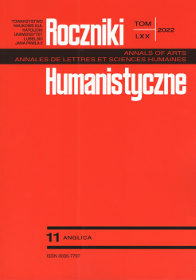
Usytuowane na pograniczu takich dyscyplin jak historia kulinarna, historia codzienności oraz badania nad narracją, niniejszy artykuł bazujący na jakościowej analizie treści w książce kucharskiej Moniki Sheridan pt. Monica’s Kitchen analizuje różne sposoby, w jakich czas uwidacznia się w tej publikacji. Artykuł ten ma na celu ukazanie tego, że książki kucharskie mogą stanowić cenne źródło w analizie przeszłości, teraźniejszości i przyszłości, a także wzbogacić rosnącą liczbę badań skoncentrowanych na irlandzkiej historii kulinarnej XX wieku.
More...
Writers belonging to cultures once subordinated to the Austrian Empire display a dual attitude towards the Centre: both rejection and nostalgia. These circumstances are translated into a multitude of cultural, behavioural, psychological and psycholiterary features, as well as a wide range of literary procedures. Sorin Titel, Miloš Crnjanski—as well as Danilo Kiš, Herta Müller and others—are writers who lived the moment of the disintegration of the Empire, with everything that this meant for the European literature, in general, and for the literature of the Banat region, in particular. This study examines how such writers analyse the history of the nations they belong to and the local perception of the Centre (administration, religion, political leaders) while exploring how they approach themes such as exile, migration, and the trauma of being separated from the place of birth. Moreover, it highlights the aesthetic dimensions of the literature from Banat and the presence of the Danube as a natural link associated with the Central-European space, together with other relevant hydronyms and toponyms.
More...
Against the backdrop of the sexual revolution that the world was undergoing and of the textual experimentation that literature was undertaking in the late 1960s, the silence of the female characters populating Victorian fiction became nothing less than audible – the source of the debate around the ‘sexual/textual politics’ to have dominated the end of the twentieth century. With The French Lieutenant’s Woman, John Fowles gives a voice to his central character, Sarah Woodruff, and, in so doing, constructs a woman who deconstructs the (predominantly male) canon. Moreover, the novelist weaves her tale into his story and thus builds successive layers of fictionality for the interrogation of outmoded patterns of thought and the associated narrative strategies – symptomatic for the late Victorian era, yet lingering in the mindset of readers a century later. To illustrate the general postmodern ‘dis-ease’ with tradition and the particular subversive manner in which Fowles challenges expectations, the present study lays focus on the cultural production of early Neo-Victorian novels, highlights parody and metafiction as recurrent modes of writing, with frequent incursions into text, context, and intertext.
More...
A critique of Tony Blair’s collaboration with George W. Bush in the War on Terror, Robert Harris’s The Ghost (2007) goes beyond its topical subject by exploring the connections between ghostwriting and spectrality. The unnamed protagonist of Harris’s novel is a professional ghostwriter who, after being commissioned to revamp former Prime Minister Adam Lang’s memoirs, becomes enmeshed in various forms of spectrality. While isolated with his hosts in a fortress-like compound on Martha’s Vineyard during the island’s bleak off-season, the ghostwriter experiences the Uncanny firsthand. In the end he compiles a 160,000-word book, not realizing that with the project’s completion he is signing his own death warrant by writing a work about the pursuit of truth. The novel’s coda differs from that of Roman Polanski’s 2010 film adaptation, but Harris’s narrative captures the universality of literary Gothicism.
More...